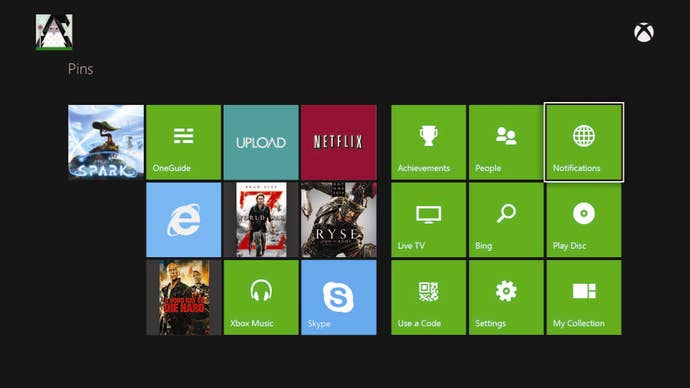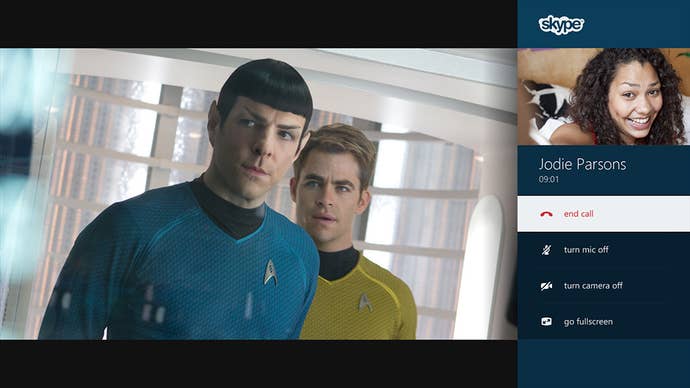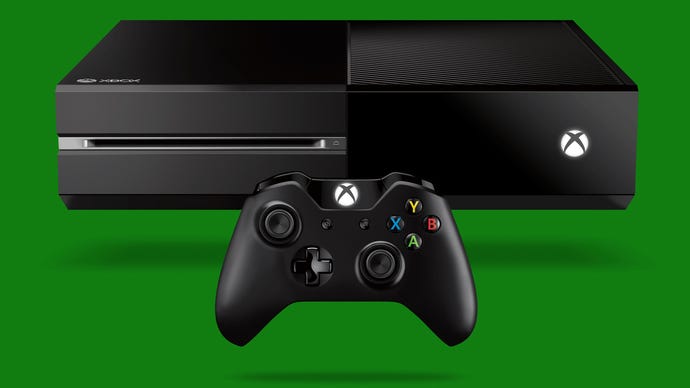TGS: Xbox One Pays Fealty to Our New Smartphone Overlords
Microsoft shows the new console's interface and its influences from other modern technology... but the underlying message may not quite be the one it's trying to communicate.
This article first appeared on USgamer, a partner publication of VG247. Some content, such as this article, has been migrated to VG247 for posterity after USgamer's closure - but it has not been edited or further vetted by the VG247 team.
"Your revolution is over, Mr. Lebowski! Condolences! The bums lost!"
Watching Microsoft Director of Product Albert Penella demonstrate the Xbox One's user interface today in a media meeting at Tokyo Game Show, I kept hearing that line from The Big Lebowski echo through my mind. Just replace "Lebowski" with "Bach" and "bums" with "consoles" and it all fits.
Xbox One really wants to be a smartphone. The system's interface is minimal, uncluttered, and greatly streamlined. It's based heavily on the Windows Mobile UI, and the connection is far more than just a matter of appearances; Microsoft has taken the lessons from their work on creating usable mobile devices to heart. Xbox One couldn't be further away from the Xbox 360 dashboard; despite its gradual evolution away from the atrocious "blade" metaphor of its early days, the 360 dash (and the underlying objects it provides access to) remains a horrible mess.

Xbox One's UI, on the other hand, consists of only about three screens to scroll through. The home screen offers a featured item and "pushed" highlights; scroll to the left to see a simple collection of tools and a "pinboard" of favorite items; scroll right to access four categories of content (games, movies, music, and apps). And that's it. Even within the content sections, things have been revamped heavily; Penella says that the Xbox One marketplace no longer distinguishes between Xbox Indies, Xbox Live Arcade, and retail games. There's less clutter, less confusion, and more options for navigation (controller, Kinect, and Smart Glass).
Having just installed Apple's iOS 7 on my phone a few hours before my Xbox One appointment, the Xbox One's resemblance to a mobile phone seemed especially striking. It's nowhere near as colorful as the new iOS, of course, holding fast to the black-and-eye-searing-green color combo Microsoft has used for branding Xbox since the original console launched in 2001. But the spirit is definitely there, and that's no bad thing. Mobile phones offer a huge number of features within a small, limited space, so UI designers have learned a great deal about usability and visual efficiency over the past five years. We've come a long way from the stupid floating cubes of the PlayStation 2.
Still, the fact that Xbox One's system has (by Penella's own admission) been built with smartphones in mind also serves to highlight the ways in which Xbox One falls somewhat short of the mobile idea. Instant app-switching plays a big part in the experience Microsoft seems eager to share with us, but it comes with sharp limits. Thanks to the way the system memory is structured, any kind of application can run simultaneously with a game... any kind of app, that is, except other games.
While it would be unrealistic to expect the hardware to run multiple games at once, the "instant game switching" Microsoft touted in the demo took nearly 10 seconds to shut down one game and boot the next. That's not terrible, but once a game is shut down, it's completely purged from memory; the system doesn't retain any sort of memory dump or save state when moving from one game to another. Compare that to something like iPhone, which let you jump around between games and return to the one you started at precisely where you left off. Even something like a MacBook's low battery save state (where the system dumps the contents of memory to disk immediately before running out of power) would be nice.
Of course, this isn't exactly an apples-to-apples comparison, or even apples-to-Apples; smartphone gaming and next-gen console gaming obviously aren't equivalent experiences. But fairness and logic rarely come into play with the consumer mindset. Gamers are accustomed to certain conveniences, and the fact that this powerful new box can't replicate the features of a tiny computer they carry in their pockets is likely to rub some people the wrong way. And, after all, Microsoft were the ones who brought smartphones into the conversation to begin with.
An equally tough sell may result from Xbox One's lack of off-screen play. While the console can support a bizarrely huge number of simultaneous connections from input devices, the Smart Glass option operates through an app that doesn't offer live video from the console. Meanwhile, both Wii U and PlayStation 4 put screen-sharing front and center. Microsoft has chosen instead to focus on using Xbox One as the centerpiece of the connected television, including a Kinect-based "IR burst" that converts voice commands into free-form infrared signals that can control a television or TiVo-like device. The system also offers video pass-through via HDMI -- including, potentially, competing game consoles. In other words, Microsoft has planted its flag around the concept of the television as the center of the living room, while the competition is moving the other direction. Xbox One could be the ultimate realization of the "set-top box" concept; the question is, does that concept still reflect the needs and habits of its users?

Despite my misgivings, I really like the revamped Xbox One interface. It feels far more user-friendly than any other console I've dealt with, and its mobile phone-like layout lends much-needed merit to the concept of using tablets to control a console. It pushes back the cramped limits of existing systems, with a friend list that now tops out at 1,000 rather than 100. It also uses the same friends-and-followers scheme as Wii U, with no ceiling on the number of people who can follow your account and see your actions -- though for the squeamish and security-conscious, this information can also be concealed. And Penella made it clear Microsoft has been tracking consumer response to privacy concerns, taking a conservative approach to storing personal info in the cloud; players can freely log in to their Live account on any Xbox One, but their personal data (such as their Kinect information) will only reside on their home console.
And I love the computing industry's long-overdue trend of moving back toward practical interface design. The simple, lean look of Xbox One reflects the shift of systems like Microsoft's own Metro style, Apple's latest iOS, and so forth. Clumsy visual metaphors like brushed metal and wet tile are dying the death they've long deserved, and of the three next-gen consoles (yes, I'm listing Wii U as next-gen) its frontend by far looks the most contemporary, but in a no-nonsense way that won't age as quickly as the UI Xbox 360 debuted with.
Honestly, I think Microsoft has done a great job of recovering from its stumbles at E3. While some of Xbox One's features may still be cause for concern, November no longer looks like a breezy slam dunk for Sony. The real question now seems to be whether or not everyone will be able to peel themselves away from their phones long enough to care.








